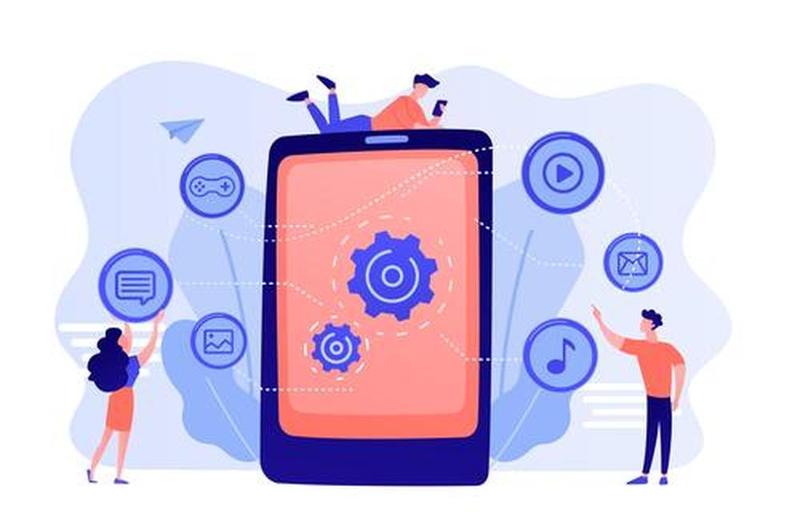
There has never been a better time to get mobile apps for your business. The smartphone revolution continues to expand, providing opportunities for both businesses and consumers. Furthermore, mobile apps are no longer just for fun and games. Many businesses are now using them to increase sales, save money, track expenses and improve customer service. In fact, as of 2021, more than 50% of all web traffic comes from mobile devices, and this proportion is growing.
This post covers the functions of a mobile app, the benefits of having an app for your business, and tips for developers when creating a mobile app.
1. Functions of a mobile app
Mobile apps are software designed to run on smartphones, tablets or computers. They are often free, but some may be paid for. Most mobile apps are developed using Apple's iOS operating system (iOS) or Google's Android operating system. Mobile apps are now widely used in many sectors, including healthcare, finance, retail, education, manufacturing, construction, transportation, utilities, government, legal, hospitality, travel, restaurants, gaming, social networking and telecommunications. For example, healthcare professionals can use mobile apps to keep their patients informed of appointments, test results, medicine and any changes in condition.
2. Some benefits of having a mobile app for your business
As smartphones become more powerful and affordable, they are now widely available to everyone. This means that anyone who is interested can download an app and start using them.
2.1. Convenience
You can do everything directly from your smartphone. You no longer need a laptop or desktop computer. Download the mobile app to your smartphone. Use it whenever you want. Depending on the purpose of the app, even if you are offline, you can continue working on your task.
2.2. Businesses
Companies use mobile apps to keep their customers informed about their products or services. Customers can create accounts and receive notifications when a company posts updates. For example, a restaurant may post menus and special offers. A retailer can post sales information, coupons, discounts and promotions. Since most people have a smartphone, they will instantly have the information you wish to share with them.
2.3. Easier communication
An effective mobile app is convenient because it allows you to communicate easily with your employees and customers. You can send messages, track orders, inform customers and ensure that information reaches your audience quickly.
3. 6 tips for developing mobile apps
Mobile apps are used by everyone from teenagers to the elderly. If you want to create a successful app, you need to follow certain best practices. These include design, beauty, user experience, app operating platform, choice of technology and testing of the final product. Let's take a look at each of these.
3.1. Design first
This step is often ignored by many app developers, resulting in poor quality apps with complex user interfaces. When designing an app, start with schematics and mock-ups, and then turn them into high-quality user interfaces. Once you have developed the initial user interface, take time to add details and refine the product. A well-designed and properly tested app will always be able to withstand changes and improvements.
3.2. User experience design (UX-Design)
UX-Design focuses on how users interact with a product. When developing a mobile app, UX-Design is an important aspect. Your app should always be user-oriented. Your goal is to make the user feel comfortable and confident when using the app. Remember that a good user interface increases the chances of converting users into customers. Quality apps keep users engaged and interacting with your app more frequently. Also, if your app looks good, it will attract more users.
3.3. Nice code
When developing a mobile app, it is sometimes tempting to put the code together without worrying about how it looks. While this may seem to save time at first, it can lead to many problems in the long run. Beautiful code is not only fun during development, it also makes it easier to maintain your app afterwards.
3.4. Maximise user platforms
Make sure you consider the environment before you build anything. It does not matter if your app is free or paid, making sure it works smoothly on iOS and Android devices will help increase its chances of success.
3.5. Choose the right technology
Wherever possible, try to use open-source technology for your apps. This technology has many advantages. First of all, it is free. Secondly, it takes less time to develop and test. Third, it is highly customisable.
3.6. Beta testing
Beta testing is essential to ensure that a product is ready to be launched. It ensures that there are no problems with the software, its components or their interactions. You will want to beta test by showing prototypes to a small group of people who are likely to use the product on a regular basis, and ask for their feedback.
By following these steps, you can identify potential problems before launch and you can be sure that the final version of the app will work properly.











